With their gentle and genteel tone, stains are quite beautiful on woods and some other surfaces they are applied on. Are you planning on applying stain on wood yourself? Do you need some information on stain dry time?
Here is what I found:
How Long Does It Take for Wood Stain to Dry?
Typically, wood stain takes 24-72 hours to dry completely, depending on the paint’s quality, type, environment, and thickness. A fully dry stain will form a smooth polymeric layer that is cool to the touch. Stainers that are not completely dry will feel sticky to the touch and leave marks.
Or, do you want to get vital information on polyurethane varnish and other stain finishes? These and many more will be explained in this article.
Other vital information available in this article is: how to know the number of coats of stain to use, how to make stains dry faster, how long to let water-based stains dry before polyurethane, etc.
Let’s read on!
Table of Contents
Wood Stain
Stains can generally be referred to as coats used on woods. They are mostly used on wood, although they can be used on other surfaces. But, mostly, they are suited for wood. Hence, the term “wood stain” is frequently heard. Different stains are available for both interior and exterior wood stains.
Below are highlights of 4 significant types of wood stains:
Water-based wood stain
This type of wood stain consists of natural water as the solvent for the stain pigment or dye. Therefore, it poses no threat to the user and the environment. This type of wood can be used on interior furniture.
Oil-based wood stain
This is formed when pigment or dye is suspended in oil. This type of stain is known for its specific deep hue which is because more pigment or dye can be suspended in the oil. Also, it is known to penetrate more deeply than water-based stains. Hence, an oil-based stain is recommended for exterior furniture or exterior wood stain.
Buttressing the facts earlier stated about oil-based stains. Oil-based wood stains are the most common wood stains known to people. The reason for its name is because the pigment or dye is thinned by petroleum distillate and suspended inside linseed oil gotten from the flax plant. Other features of oil-based wood stains are:
1. It mainly contains binder (varnish), allowing the stain pigment to adhere strongly to a wood surface.
2. It also contains a thickening agent, this gives oil-based stains their thick consistency.
3.) They have a high penetrating power. Hence, most oil-based stains are suitable for exterior wood surfaces.
4.) More pigment can be added to oil-based stains to form wiping stains.
Let’s quickly look at the answers regarding oil-based wood stains, water-based wood stains, and their application.
Gel Stain
The peculiar feature of gel stain is its thick consistency. The rationale behind this innovative wood stain is to create an alternative solution to how water-based stains run off during application. Hence, the pigment in the gel stain was thickened to enable stress-free application. These thickened pigments can be thinned using mineral spirit, and a second coat may be unnecessary.
Varnish Stain
This is similar to oil-based stains. The major difference is the coating outcome after application. oil stains give a soft coat, while varnish stain produces a hard coat. Hence, a stain finish might be unnecessary with this resulting hard coat. Other varieties of wood stains are lacquer wood stains and dry stains which can be dissolved using oil or water.
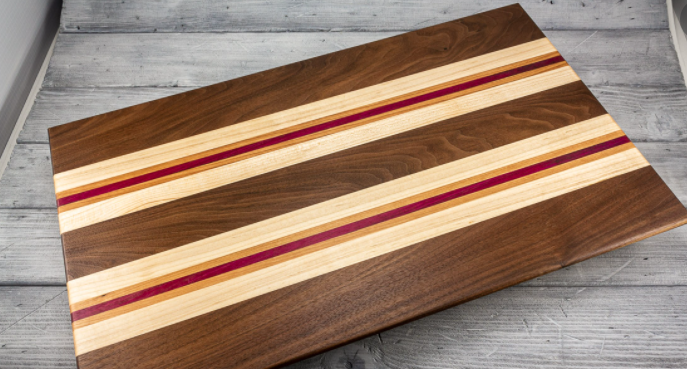
How Do You Know When A Wood Stain Is Dry?
Furthermore, having explained the different types of wood stains, it is important to provide answers to some questions on the wood stain. As mentioned in the introduction, wood stains have different drying speeds, which are affected by different factors. As a result, the type of stain being used will determine how you know when it is dry.
For water-based wood stain, you know if it is completely dry by seeing some dried stain color on its surface and it can be touched by placing your fingers lightly on the wooden surface.
Oil-based stains like earlier mentioned gives a soft coating. To really know when it is dry, place your finger on it, if it feels gluey to your finger, it is not yet dry, give it a few more minutes to dry.
On the other hand, gel stains are thick, hence they take longer hours to dry, but once you try scratching with your nails, and you cannot, then your gel stain is dry completely.
Varnish stains dry up quickly in a way that is obvious to the eyes, and easily detected by touch.
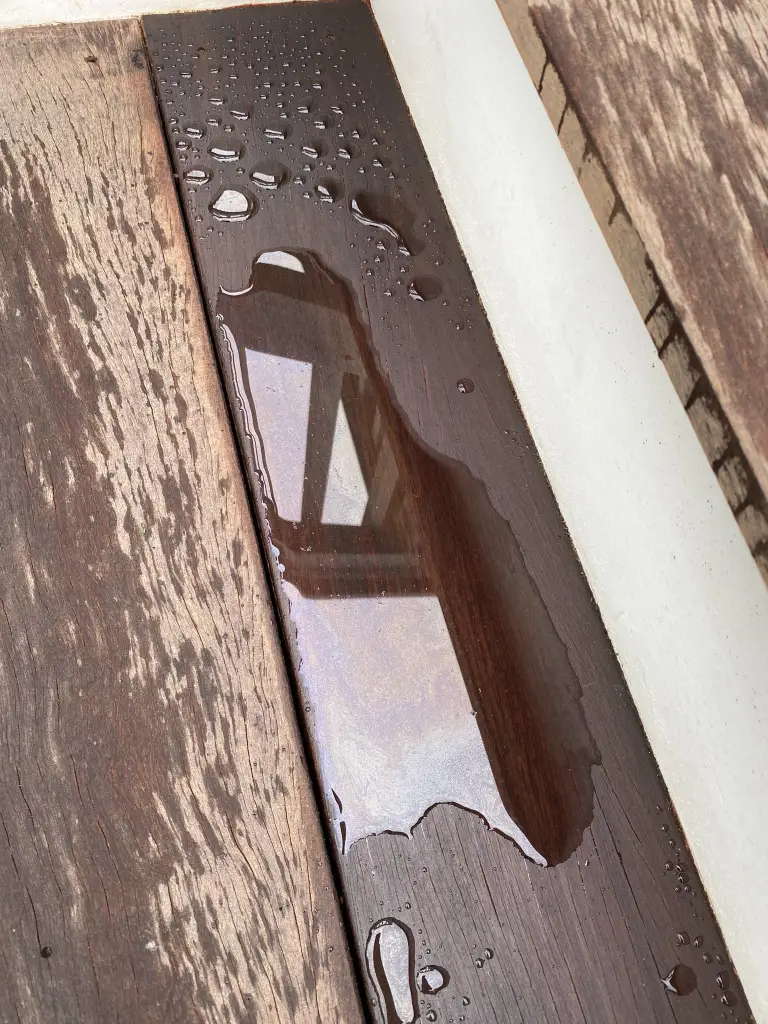
How Long Does Wood Stain Take To Dry to The Touch?
A stain’s drying time differs based on the type of stain. An important factor to consider in knowing the time frame it will take for the stain to dry is the instruction given by the manufacturer. However, ordinarily, the stain gets dried within 2 to 24 hours. If it doesn’t get dried to touch within that interval, a lot of factors like weather conditions could be involved. It is then advisable to wait overnight for the stain to dry.
Also, in case of applying layers of coating, after applying the first cost, ensure you wait for the stain to be adequately dry before you apply a second coat. Otherwise, excess stains cannot be avoided. Fast-drying wood stains like lacquer and varnish stains dry completely within 5 to 6 hours, while oil-based and water-based stains might take 24 to 72 hours. However, remember that stain drying time is affected by different factors. That is, dry time varies.
Related Post >> How Long Does Deck Stain Take To Dry Before Walking?
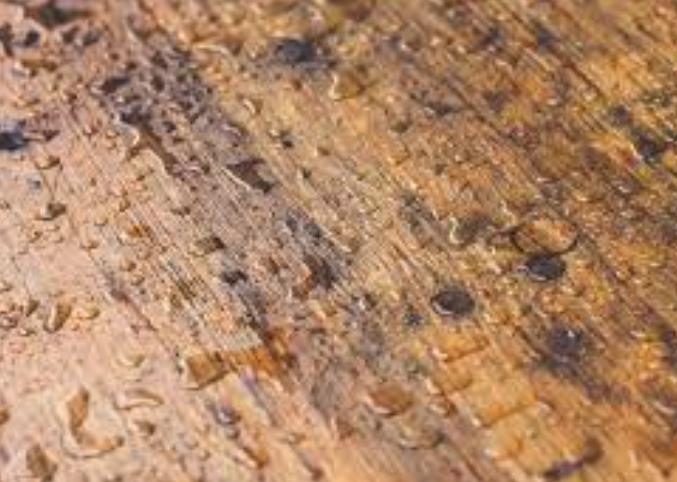
Factors That Impact Wood Stain Drying Time
Furthermore, as earlier said, apart from the type of stain being used, or thin coats of stain being applied, certain factors affect stain drying time, thereby making drying time varies when staining wood.
Below are a few factors that prevent stains from drying or inhibit stain drying:
1.) Weather
Basically, weather naturally impacts the drying time of stains. For instance, rainy weather. This is simply because humidity increases when it rains. Meanwhile, too much humidity slows down the time it takes stain to dry.
2.) Application: Thickness and Layers
Varying factors affect the dry-up time of different stains. One of these factors is the layer of the coat. The dry-time for one layer of wood stain coat will surely differ from the two layers. As a result, the drying process varies. Some take hours while others take days to completely dry.
Perhaps, you took your natural bristle brush and you creatively and happily stain wood. But, all of a sudden, the stain is not drying up! You touch it and it feels tacky to the touch. No cause for alarm, tacky stain eventually dries, although it might take a longer period. Hence, to avoid this occurrence again, apply your stain in thin coats to prevent tackiness, and wasting time waiting for the stain to dry.
3.) State of the wood
Some woods have been stained before. Hence, procedures of sanding to remove previous coats and applying wood conditioner for the new stain to penetrate are very important. Otherwise, the stain will stay at the surface of the wood, thereby taking a longer period to dry.
4.) Surrounding of the wood
The atmospheric conditions of the stained can determine if the stain dries quickly or take longer periods. For instance, the required temperature for quick stain drying in an enclosed space is within the range of 55 – 90°F.
How Do You Make Wood Stain Dry Faster – 4 Effective Strategies
Waiting for hours to get those interior and exterior stains dry can be a little bit tasking. Hence, the first thing to do to hasten up the stain drying process is, to get to know the causes of the delayed drying. Is it excess stain? Is it a wrong stain mixing? Is it too much paint thinner? Is it a lack of air circulation? It could be anything, and you can find it out. Nonetheless, here are some strategies to use to dry up your stain faster.
Strategies to use to dry up your stain faster:
1. Working Outside in The Sun
When working on exterior wood surfaces, make sure you stain when the sun is coming up.
The best drying process for wood stains is direct sunlight exposure for three or more straight hours.
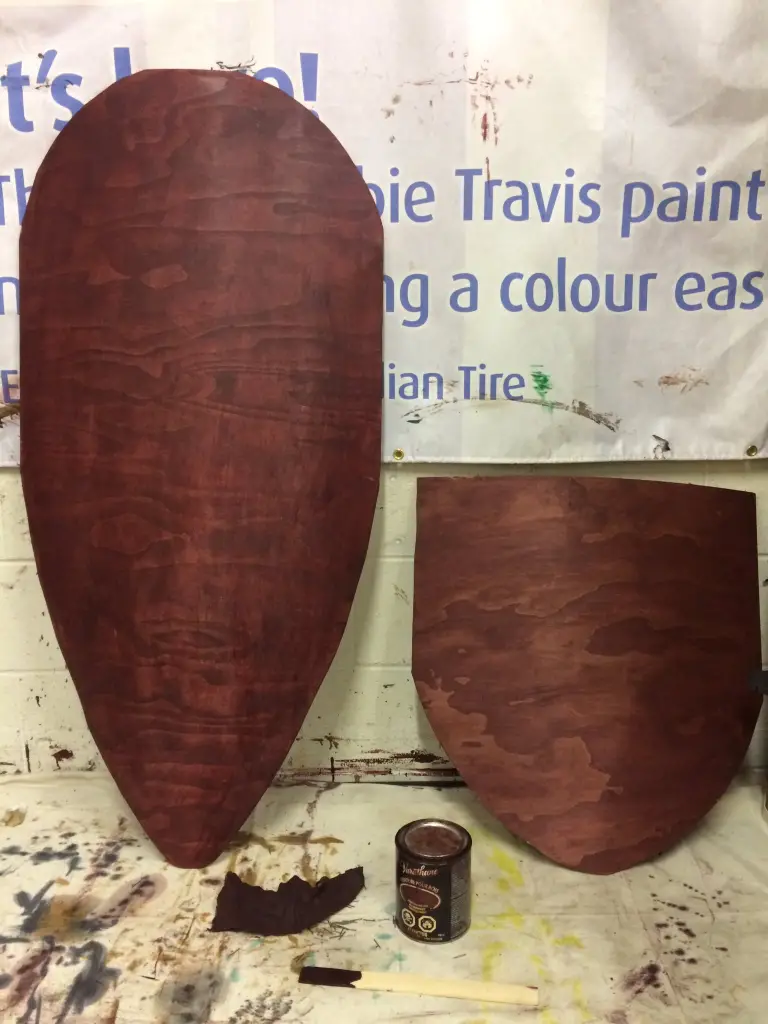
2. Using The Heater
For interior stains, direct sunlight exposure might not be possible. Hence, you pay attention to the surrounding weather conditions and artificially regulate it to hasten the drying process.
Since wood stains need a high temperature to dry up quickly, you can increase the surrounding temperature using a heater for interior stains.
3. Use An Air Conditioner and Dehumidifier
Also, when trying to get the moisture out of your applied wood stains, try to regulate atmospheric moisture, that is, humidity. High humidity will not allow your wood stain to get dried completely. You can reduce this high humidity by switching on the air conditioner or de-humidifier.
Related Post >> How Does Humidity Affect Wood Staining?
4. Use The Fan
Lastly, you can also increase the amount of natural hair, increasing ventilation. This also helps to dry your wood stain faster.
Best Fast Drying Wood Stain – Rust-Oleum Varathane
Moving further, it is important to note that there are different wood stains in the market that are fast drying. Take, for instance, the new metalized dye stains that can be sprayed on woods instead of using a lint-free cloth or a high-quality brush. This wood stain is known to dry up within minutes.
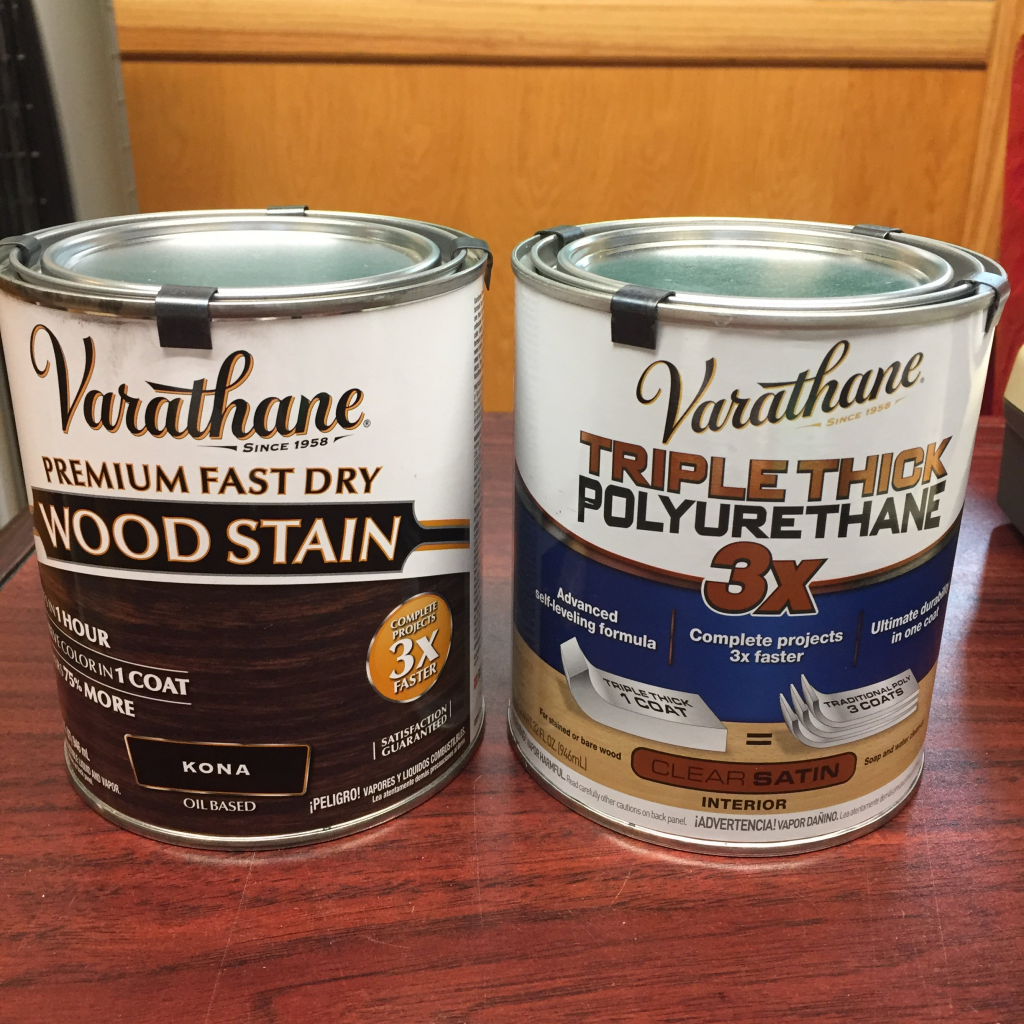
Another wood stain that is fast drying is lacquer wood stain, this is because of its volatile composition. Within 15 to 20 minutes, you can completely dry a lacquer wood stain. However, it is equally important to know that between the two common types of wood stains, oil-based wood stains dry faster than water-based wood stains. Therefore, if your wood surface is not selective, you can decide to choose oil-based stains.
Also, in selecting the best fast-drying wood stain, remember to select based on interior stain or exterior stain suitability. Generally, the Rust-Oleum varathane oil-based stain is known to be the best fast drying stain. Here are some of its advantages.
Advantages of Rust-Oleum Varathane
1. It is well known for its one-coat application. All you need to get that darker hue is just one coat. And after the stain dries, you can apply the topcoat.
2. You do not have to make use of wood conditioner before using it.
3. It is time-saving. Instead of waiting for 8 hours to completely dry some stains, you get your wood surface stained within minutes. Hence, if you want to stain wood in large numbers, you can get it done quickly.
4. Also, it helps to accentuate the features of wood grains very well.
5. It is available in more than 20 colors. Different sizes are also packaged.
Other quick-drying wood stains are:
1.) Ronseal rainproof quick drying wood stain.
2.) Quick dry wood stain from the Sadolin company.
3.) 1- 2 hours drying time Blackfriar exterior wood stain.
How long does it take for a water-based stain to dry before polyurethane?
Moving further, wood finishes are quite important in giving a finishing touch, and a protective layer to your stained wood. Therefore, the type of finish you give to your stained wood surface will determine if your work will come out more beautiful or not.
There are different types of stain finishes. There are oil-based finishes, water-based wood finishes, lacquer wood finishes, shellac wood finishes, etc. However polyurethane finish is the most common of these finishes, and it exists in two forms; water-based polyurethane and oil-based polyurethane. It is regarded as the best finish that enhances wood grain.
Hence, are you trying to figure out how long it takes to dry your stain before applying polyurethane? The answer is quite simple. Let your water-based stain dry completely before polyurethane. And, as earlier mentioned, you can know when your wood stain is dried when there is a color change from wet strain to dry strain. This dry color strain can be confirmed with touch.
Hence, allow your water-based stain to dry for as long as it takes before applying polyurethane coating. Usually, it takes 3 to 4 hours to dry depending on atmospheric conditions. You can read more above on ways to speed up the time of drying off your applied wood stain.
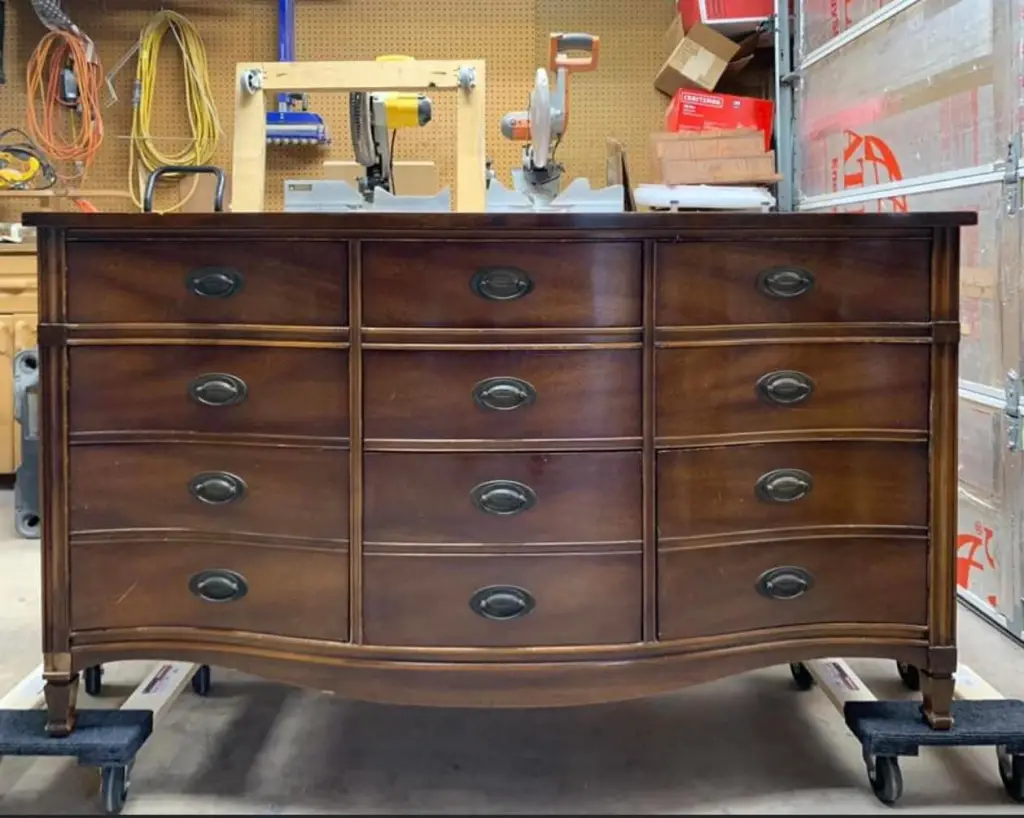
What happens if you apply polyurethane before a stain is dry?
Have you creatively applied polyurethane finish on your stained wood that is yet to dry before? You can attest to the fact that the result was not a beautiful sight to behold. Polyurethane and wood stain contains a different chemical element, and these chemical elements do not combine.
Therefore, applying polyurethane coating on a wet stain will bring about a combination of your wood stain and polyurethane, because their elements do not bond, the whole mixing just stays on the wood’s surface, taking a long time to dry. Hence, to save yourself the stress and time waste, allow your wood stain to dry up before you apply a polyurethane finish. Also, before you apply polyurethane, you can softly sand your coat to make it infuse deeply into the wood
Excess Stain
To make sure stains penetrate deeply into the wood grain, we over-apply them, which results in excess stains. Excess stains can be messy and blotchy when dry, especially for oil-based wood stains. Therefore, it is better to remove excess stains immediately.
You can do this using a lint-free cloth to wipe over the stain in one direction only. Or, you wipe over with a piece of cloth dampened with little mineral spirit, a petroleum distillate. Below is other information you need to know to avoid excess stains and apply your wood stain effectively.
How many coats of stain should I use to avoid excess stain?
We are in a technological era where we no longer need to wait for professional services before we get things done. You can apply your own wood stain professionally.
However, there is a need to know when stain dries, staining wood ranges, and when to coat, re-coat, and apply the finish. There are a lot of factors that determine if you will apply only one coat, or if you need to apply a second coat.
Below are some of the factors to consider:
Factors to consider to avoid excess stain
1.) Type of Wood Stain: Some wood stains like gel stains are thick, hence you might only need to apply once before you apply the finish. On the other hand, the penetration power of water-based wood stains is not too high. Hence, you might need to apply a second or third coat to get a darker hue when using water-based stains.
2.) Requirements: There are hundreds of wood-stain manufacturers, and they know the constituent power of their wood stains better than prospective users. Hence, if the purchased wood stain says you should apply two coats for better effect, then do.
3.) Exterior Stains: If the wood surface you want to stain is going to be exposed to outer atmospheric conditions like rainfall, ultraviolet light rays, sun, etc, it is advisable to coat twice in order to protect the wood while enhancing the wood grain deeply.
4.) Appearance: Another factor that determines how many coats of stain you should use is the appearance of your first coat. If the first coat appears to be scruple or dull, then there is a need to apply a second coat.
How long should oil-based stains dry between coats?
In addition, stain drying times vary. Therefore, the time frame for the paint to dry between coats varies, and as earlier said, drying time depends on other factors like weather, ideal temperature, etc.
However, specifically, for the common oil stain, the interval between the first and next coat should be within 1 to 2 hours in the absence of contradictory environmental factors. Try as much as possible to avoid applying too much stain when coating the second time this is because your topcoat will stick to the second coat instead of it penetrating the wood. After this second layer of applying stain, you should allow it to get completely dried for roughly 6 to 8 hours before topping your coat with the finish.
For gel stain, you might have to wait for more than 9 hours to apply another layer of stain, this is as a result of its jelly element which makes it heavy. Note, that you can decide to sand the wood’s surface a little before you apply a second coat. This makes it infuse quickly and deeply into the wood.
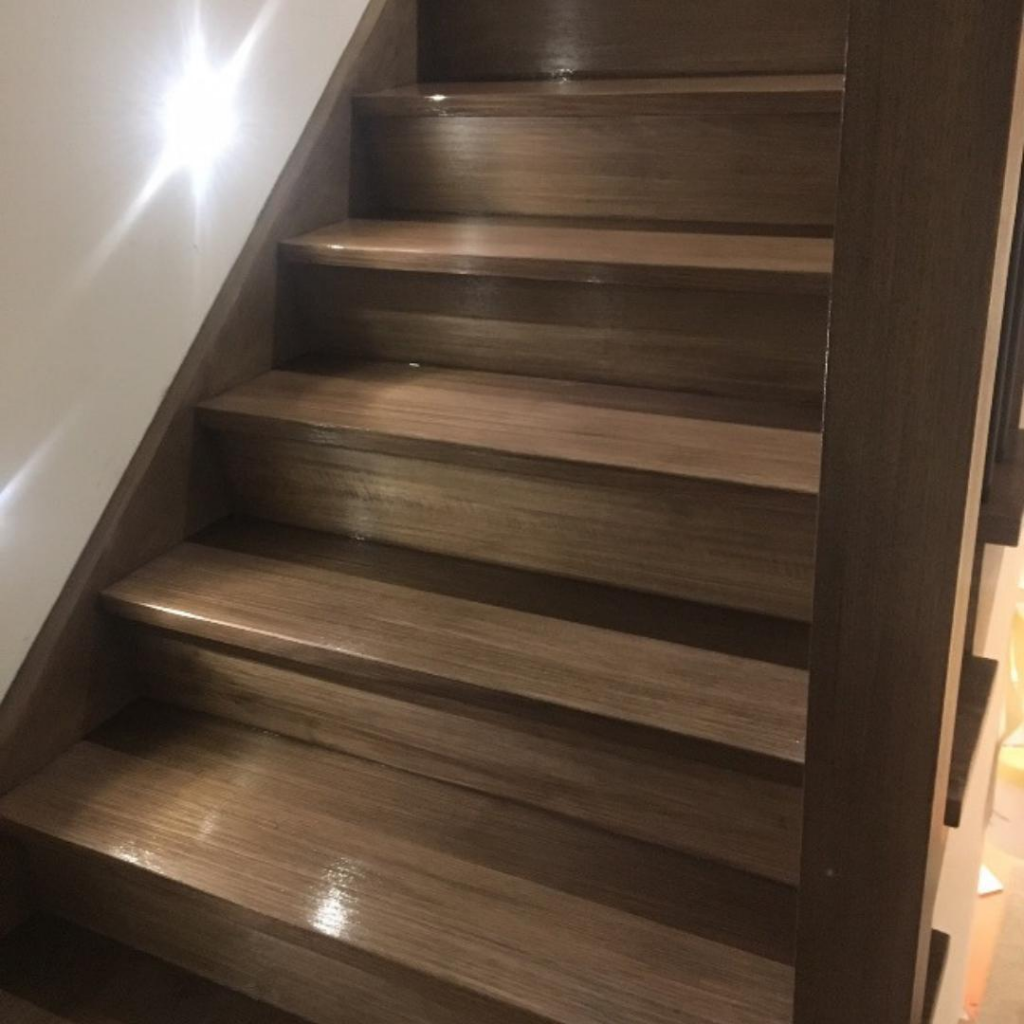
How can I slow down wood stain drying time?
Are you working on some wood projects and do you need to stall drying time in order to fix staining mistakes or get rid of the tacky stains? Below are some techniques you can use to achieve that.
1. If it is indoor, all you need to do is make the environment non-conducive for the moisture or solvent in the applied wood stain to escape.
2. That is, high temperature fastens drying time but because you want to slow it down, you leave it under normal temperature.
3. Instead of switching on air conditioners or de-humidifying to fasten stain drying, you switch it off to slow it down.
4. Lastly, you shut every means of proper ventilation. Hence, to slow down drying time for movable interior woods, do not bring the wood out into the open because sunlight and air will dry it up faster.
5.) However, it is good to note that it might be impossible to slow down the drying time of immovable exterior woods if it is directly exposed to sunlight and good ventilation.
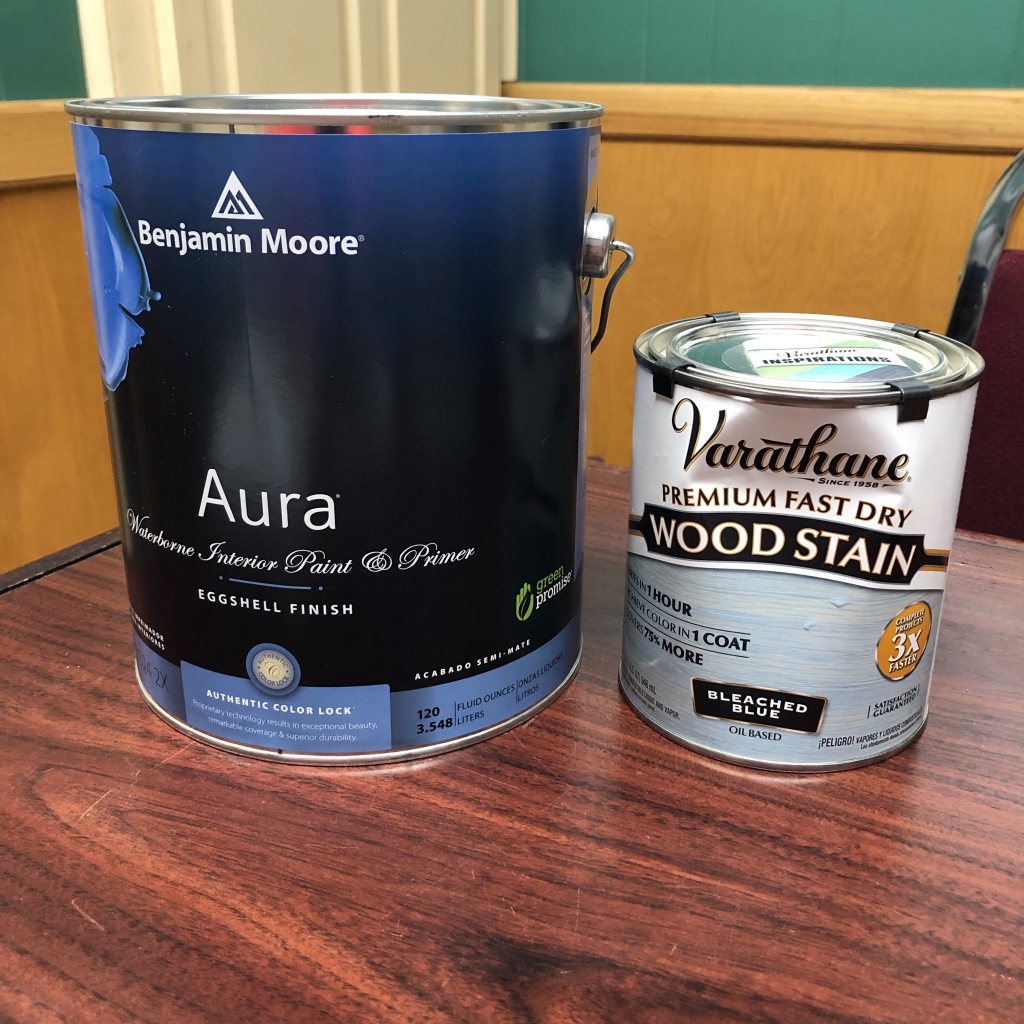
Some facts about wood stains
We have discussed various aspects of wood stain and answered different questions about wood stain so far. I hope the information in this article was worth your time and has helped you to widen your knowledge of wood stains. However, before we conclude, let’s quickly look at 8 facts about the wood stain:
1.) Wood stain has been in existence for more than 100years.
2.) Wood finishes can be divided into two. They are natural finish and artificial finish. Common polyurethane is an artificial wood finish.
3). In applying stains, only the top layer of wood is penetrated. Hence, most stains can be scrapped.
4.) The most produced and sold stain is an oil-based stain.
5.) Oil stains made with solvents like alcohol, are considered dangerous to the environment.
6.) Stains are available in diversities of colors depending on the wanted tone and hue.
7.) The three most important wood-stain elements are pigment, solvent, and binder. The most important is solvent. This is because the type of solvent that carries a pigment will determine the features of the resulting stain to a larger percentage.
8.) There is a stain whose pigment dissolves in a solvent, and others whose pigment disperse but do not dissolve in a solvent. The difference between them is, that stains with dissolved pigments enhance natural wood grain more than the ones with dispersed pigments.
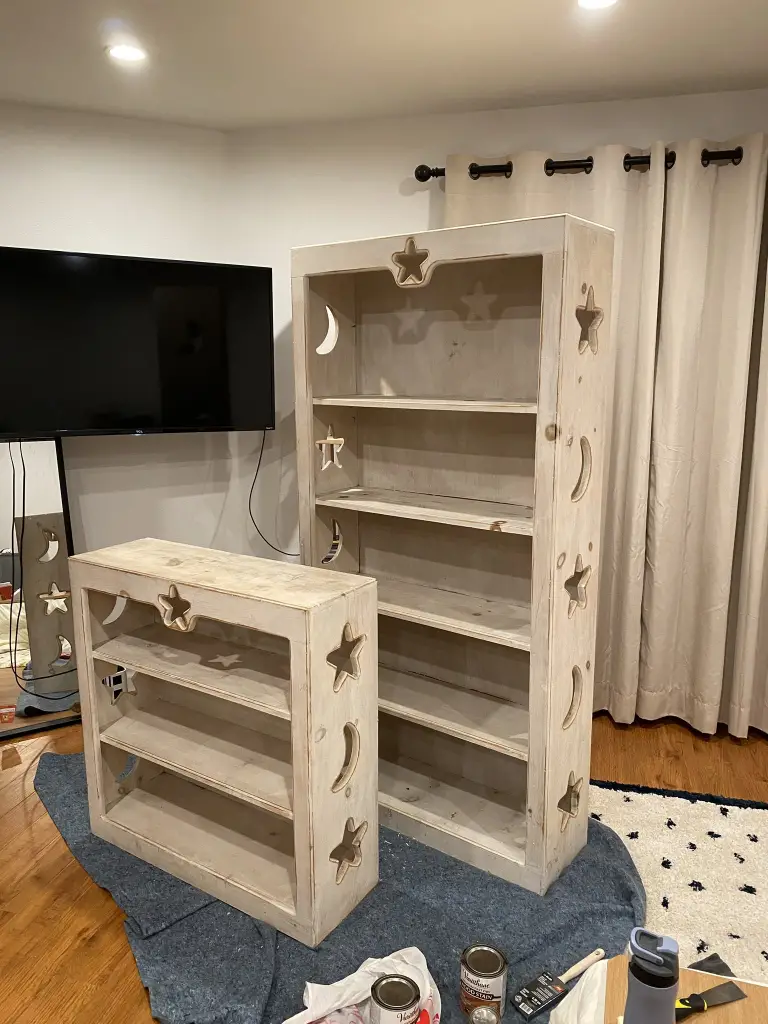
Necessary Safety Measures
It is imperative to point out that necessary precautions should be put in place while applying stains. Some stains are dangerous as a result of volatile solvents. Also, avoid eye contacts with stains to prevent eye irritation and cover your nose to prevent inhaling stain fumes, which can be toxic. Remember, health is important.
Conclusion
Most stains are fully dry within 24-72 hours, and the dried stains develop a smooth finish that is cool to the touch, non-sticky and does not leave finger marks.
Therefore, having answered the question of “how long does stain take to dry”, and others such as how many coats to be used, how long should stain dry before coat, etc., all you need to do is get your wood stain, pick up your brush or clean cloth, and start staining wood like a professional.

My name is Mark, and I am a software engineer and the founder of OnWoodWorkingArt.
I grew up with a passion for woodworking and now have my woodworking studio with a group of like-minded friends who love to create woodworking. My dream is to have a more extensive workshop and be able to make woodworking my main business.
